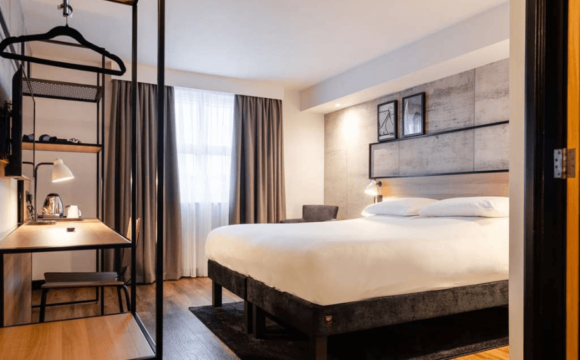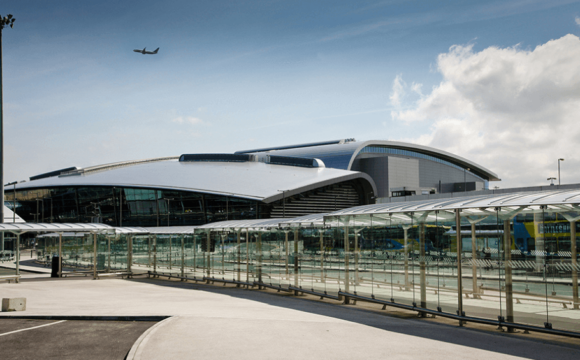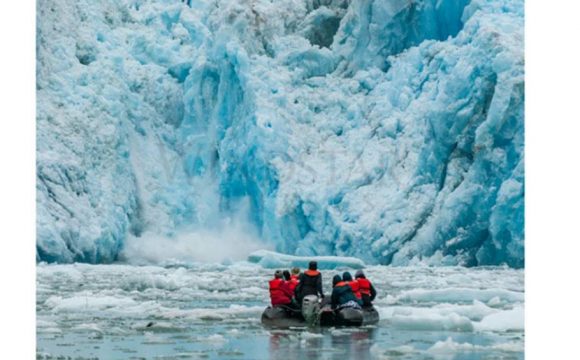Under the light of a dazzling full moon, we crunched across a vast white plain, our prints leaving impressions on the brittle silvery crystals underfoot. There was nothing else to see on the landscape, no trees, no buildings, no vehicles, just a few dozen people under a shining moon, walking en masse towards nothingness.
We could, as some of our group commented, been on the beach at one of those notorious full moon parties in Thailand, so white were the particles we were walking upon. Or, as others noted, it felt like we were walking on the surface of the moon.
Rather, we were in India, walking on one of this fascinating country’s most amazing treasures – the White Rann at Dhordo. A desert, no less, but like no desert we’d ever seen before.
White Rann, in an area known as the Great Rann of Kutch in the north-west Indian state of Gujarat, is a vast salt plain and unique eco-system and it’s during winter that you see it in all its glory. During the monsoon rainy season the area becomes a salt marsh (the word rann translates as ‘salt marsh’, or desert, depending on who you ask) but during winter, when the water evaporates, the remaining salt turns the area into a white desert.
The best time to visit it is during a full moon, when the land beneath your feet glitters in the reflected moonlight. There’s even a special month-long Rann Utsav (Rann Festival) that starts every year in mid-December to celebrate this natural phenomenon, with a temporary accommodation village, the White Rann Resort, that is annually created from scratch to allow visitors to stay in large, luxury tents complete with mod cons, enjoy meals and activities, shop for souvenirs and watch folk dancers perform under the Indian night sky.
The state of Gujarat doesn’t have the recognition of India’s more famous sights such as the Taj Mahal in Agra or the national capital of Delhi, yet its roots go back 3500 years and it’s notable for being home to the relics of Buddha, as well as being the birthplace of Mahatma Gandhi. It’s a dry state, one of three in the country, and, while visitors can bring in alcohol when they visit, no-one in my tour group missed it or noticed the difference.
Gujarat, India’s most western state, has also so far been largely left off the tourist map, but it is exactly this which makes it such a fascinating place to visit – there are no tourist traps, no hard sells, the food is authentic and delicious and the people are genuinely pleased to see you. It’s also filled with historic sites, wildlife sanctuaries and a thriving arts and textiles industry, not to mention that unique white salt desert.
To get the most out of it, it’s best to visit Gujarat as part of a larger tour group or with an organised itinerary drawn up before your trip – a good tour operator with experience of organising trips to India will be able to help you with this – so you aren’t struggling to get around this large, diverse state by yourself.
My itinerary kept me to the north and west of Gujarat, and took in the Wild Ass Wildlife Sanctuary in the Little Rann of Kutch, where we saw these beautiful animals running free in what is the largest wildlife sanctuary in India. And if you travel into the south of the state, which I sadly didn’t have time to do, you can find the Gir National Park and Wildlife Sanctuary, a tapestry of flora, grasslands and wetlands, forest and scrub land.
It is here you can see the majestic Asiatic lion, also in its natural habitat, along with more than 40 species of mammal and hundreds of bird species. Travel south to Gir and you’ll most likely pass through Talaja, home to caves cut out of conical rocks with Buddhist and Jain carvings on the walls. Or, you may stop off to see the Jain temples located near the city of Palitina in the Bhavnagar region.
You’ll find the big name chain hotels in places such as Ahmedabad, the largest city in Gujarat, which boasts a Hyatt and Crowne Plaza among others. But outside the big cities you’ll find authentic family-run safari lodges and accommodation in nature reserves.
One such place we stayed in was the Kutch Safari Lodge on the outskirts of Bhuj city, in the district of Kutch. It was a great base from which to enjoy day excursions in the region, as well as an outing into Bhuj to stock up on handmade Indian gifts to bring back home.
Seventeen cottages are spaced out within the grounds of the Safari Lodge making up a sort of hamlet, with each round, one-storey, white-washed building featuring beautiful views over the Rudramata Reservoir. These thatched-roof cottages have been built to reflect the rustic ‘bhunga’ mud huts of the region, which largely withstood the devastating Gujarat earthquake of 2001 while larger, more modern buildings collapsed.
One of my favourite memories from the trip, in fact, was sitting on the verandah outside the resort’s dining room discussing the meaning of happiness with fellow members of my tour group, a diverse mix of nationalities and personalities, from Deepak, the Canadian-Indian lapsed Sikh, to jolly Russian travel agent Maxim, and thinking to myself how completely and utterly, blissfully relaxed and happy I was in that moment.
For it is true what it said about India, it is indeed a fascinating, incredible place full of colour, spirituality, joy and laughter. No other place in the world is quite like it, and nor would you want it to be.
















